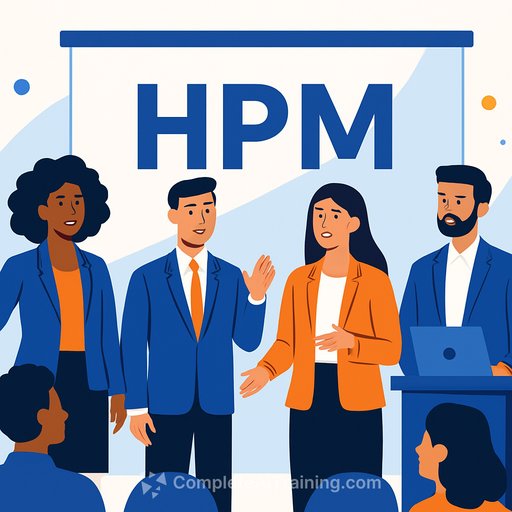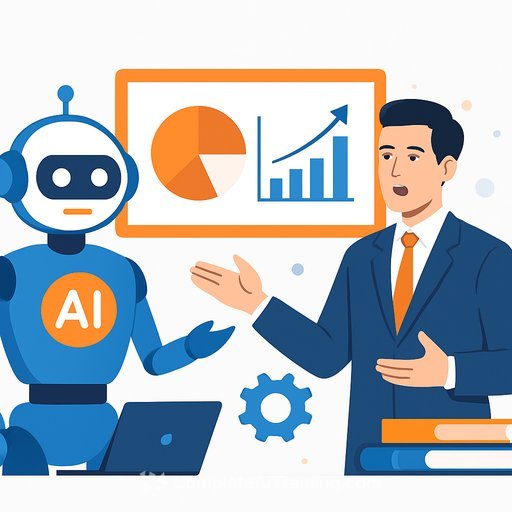AI, Jobs, and the HR Reality: What Comes Next
Two clear views are emerging from the front lines. Evgeny Koloda, an information technology consultant, says AI will erase a huge share of jobs and force governments to roll out universal basic income to prevent unrest. Joy Cavin, a heavy AI user, believes the picture is challenging but workable: some roles will go, new ones will show up, and the work itself will change.
Both spoke at an AI for business event held Oct. 22 at the Alumni Centre in Olds. Here's what matters for HR right now.
What Koloda is warning about
Koloda says AI is already replacing thousands of roles in major companies and manufacturing hubs. He expects government tasks to be automated in smaller countries first, with legal work and many white-collar functions following.
His own kids are choosing careers, and he admits he can't give confident guidance. He suspects psychology, patient-facing care, and some teaching will remain because people still want human interaction and trust. He also predicts a basic income will be needed as workers get displaced, arguing that without support, social unrest is likely.
He cites Elon Musk's talk of funding a stipend at scale, and he stresses the near-term is hard to forecast beyond a year. His focus: practical deployment, not theory.
What Cavin is betting on
Cavin agrees jobs will change, but she reminds us how the internet unfolded: disruption first, then new roles. The mission is to keep AI aligned with human goals while leaning into the opportunities it opens.
HR playbook: What to do in the next 3-12 months
- Run task-level audits: Break roles into tasks. Tag each as automate, augment, or transform. Prioritize quick wins that cut cycle time without cutting trust or safety.
- Design for redeployment, not replacement: Build internal pathways from at-risk roles to AI-augmented ones. Publish skills maps and make mobility the default.
- Skill sprints for everyone: Baseline AI literacy for all employees. Add tracks for data, prompt quality, workflow automation, and model oversight.
- Rewrite job descriptions: Emphasize decision-making, judgment, and customer trust. Reduce generic requirements; highlight AI-tool fluency.
- Update performance metrics: Measure outputs per hour, quality, and risk incidents in AI-assisted workflows. Reward smart use of tools, not just volume.
- Create AI usage policies: Clear rules on data, privacy, bias, human-in-the-loop, and vendor access. Keep it short and enforceable.
- Wellbeing and change support: Coach managers to talk about fear, growth, and workload shifts. Offer counseling and transition programs; the human piece matters.
- Pilot new work models: Try 4-day schedules, project pools, or learning stipends tied to role transitions. Track retention and productivity.
- Procurement discipline: For each AI tool, define the problem, success metric, control owner, and decommission date if it misses targets.
- Engage policy early: Monitor external signals on income support and labor rules. Coordinate with industry groups so you're not reacting late.
Functions likely to shift first
- Customer support and service operations
- Content production, marketing ops, and localization
- Data analysis, reporting, and quality checking
- Software testing, documentation, and code remediation
- Back-office processing (AP/AR, claims, KYC)
- Legal research and contract review
- Procurement, vendor due diligence, and compliance admin
- HR admin: scheduling, screening, and policy queries
Human trust advantage: roles with staying power
- Therapists, counselors, psychologists
- Frontline healthcare and patient-facing clinicians
- Learning facilitators and coaches
- Safety-critical engineers and field technicians
- Risk, audit, and oversight for AI systems
Metrics to keep you honest
- % of tasks automated per role (and quality impact)
- Time-to-skill for core AI tools by role
- Redeployment rate from at-risk roles
- Employee engagement, burnout, and regrettable attrition
- Model error rate, bias flags, and incident response time
- Unit-cost reduction and time-to-value per AI initiative
Where HR can start learning today
Give your team a structured path to AI fluency and role-specific tools. If you need a curated place to start, see Courses by Job and certifications that fit HR and operations work.
A balanced outlook for HR
Koloda's warning and Cavin's optimism can both be true depending on how we act. HR sits at the switch: redesign work, reskill at speed, protect trust, and move people into better roles before the floor shifts under them.
The future isn't set. Build for multiple outcomes and keep your feedback loops tight.
Further reading
Your membership also unlocks:






